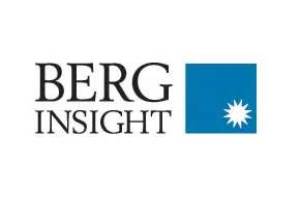2021 was a ‘breakout’ year for the cellular IoT module industry, says Berg Insight

Gothenburg, Sweden. 8 June 2022 – According to a new research report from the IoT analyst firm Berg Insight, annual shipments of cellular IoT modules increased by 39% in 2021 to reach 428 million units. Annual revenues grew faster at 54% to reach US$ 5.3 billion (€4.95 billio), reflecting strong customer demand in a constrained supply environment. Even though the supply shortage likely has caused some inventory build-ups, several vendors have reported continued strong growth in the first quarter of 2022, suggesting that short-term demand remains robust.
The results of Berg Insight’s latest cellular IoT module vendor market share assessment show that the five largest cellular module vendors, including Quectel, Fibocom, Sunsea AIoT, Thales and Telit, hold 68% of the market in terms of revenues. Overall, the year 2021 was a record year for the cellular IoT module industry, in which all major vendors achieved double-digit growth. China-based vendors continue to outgrow the market, in part due to the significant growth in the domestic IoT market, which now accounts for more than 55% of global cellular module demand.
4G LTE is the dominant technology as LTE Cat-1, NB-IoT and LTE-M replace 2G and 3G technologies in the low to mid market segments. LTE Cat-1 module shipments close to tripled in the year, driven by strong uptake in China, where chipsets from domestic suppliers supporting the single antenna version LTE Cat-1 bis are roughly half the price compared to standard LTE Cat-1 platforms. Adoption of LTE Cat-1 in the country comes somewhat at the expense of NB-IoT shipments that recorded slowing growth year-on-year. Similar to the previous year, NB-IoT module shipments were largely confined to China. Internationally, NB-IoT module shipments are in the single-digit millions with demand primarily driven by smart gas metre and smart water metre deployments.
LTE Cat-1 modules also account for a major share of the volume in North America, Europe and parts of the Asia-Pacific region, though LTE-M is viewed as an increasingly attractive alternative for IoT devices with stricter requirements on power consumption and long lifecycle. As both LTE-M and NB-IoT are 5G-ready, they are suitable for IoT devices that will stay in the field for more than 10 years, which may prove critical as mobile operators in advanced markets will start to sunset their 4G LTE networks near the end of the decade. LTE-M module shipments today far exceeds NB-IoT shipments outside of China. The ability to perform over-the-air software upgrades of LTE-M devices has proven to be the key factor for the technology’s success compared to NB-IoT.
5G NR module shipments are starting to take off across product categories such as connected cars and IoT gateways. 3GPP’s latest Release 17 introduced 5G NR support for reduced capability (RedCap) devices, expanding 5G NR to less complex IoT devices for higher-end applications that require faster speeds compared to LTE-M or NB-IoT. The technology will function as a replacement for LTE Cat-4 and LTE Cat-6 devices such as wearables, telematics gateways, industrial meters and alarm panels. Enhanced RedCap (eRedCap) that is part of 3GPP Release 18 will offer improved energy efficiency and provide a migration path for LTE Cat-1 designs.
Download report brochure: Cellular and LPWA IoT Device Ecosystems
Comment on this article below or via Twitter @IoTGN
